Over the last year, Instagram has been zeroing in on the e-commerce market. In late March, 2019, they announced Instagram checkout, a payment feature that will allow users to pay for purchases in-app.
It’s a huge leap forward for a social platform that has only recently made its e-commerce debut. Selling on Instagram become possible last September after Instagram implemented product tagging. Now with checkout, users will soon be able to browse, select, and pay on the same platform. What does that mean for Instagram retailers or e-commerce businesses?
Here are some things to bear in mind when fantasising about the new Instagram feature.
What will Instagram checkout look like for buyers and retailers?
Instagram began experimenting with e-commerce features in June of 2018, allowing retailers to tag products in Instagram Stories. The rationale was that one-third of the most viewed Instagram Stories were from brands. (Psst, if you’re a brand with an Instagram and need to get into Stories, check out Biteable’s Instagram templates).
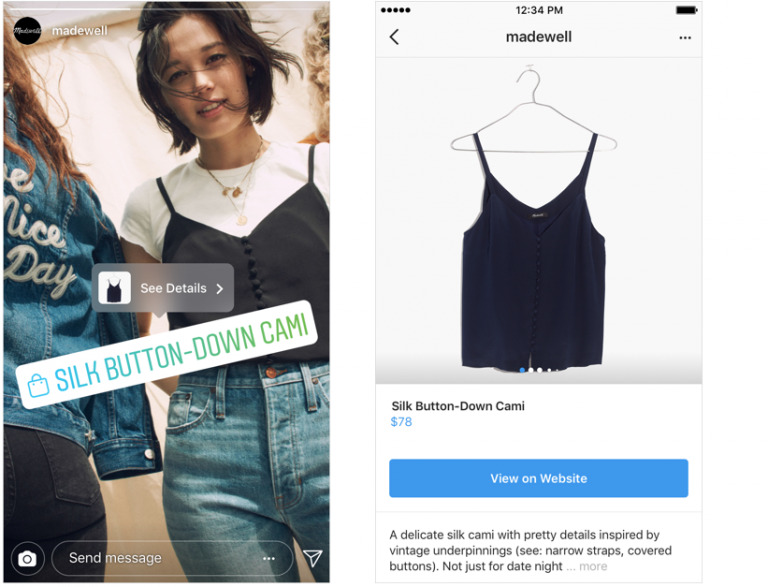
They quickly pivoted, however, and released a more robust and widely-available shopping mechanism in September, allowing retailers to also tag products (and prices) in posts and link to third-party e-commerce sites to seal the deal. They also launched a ‘Shopping’ tab in the Discover section.
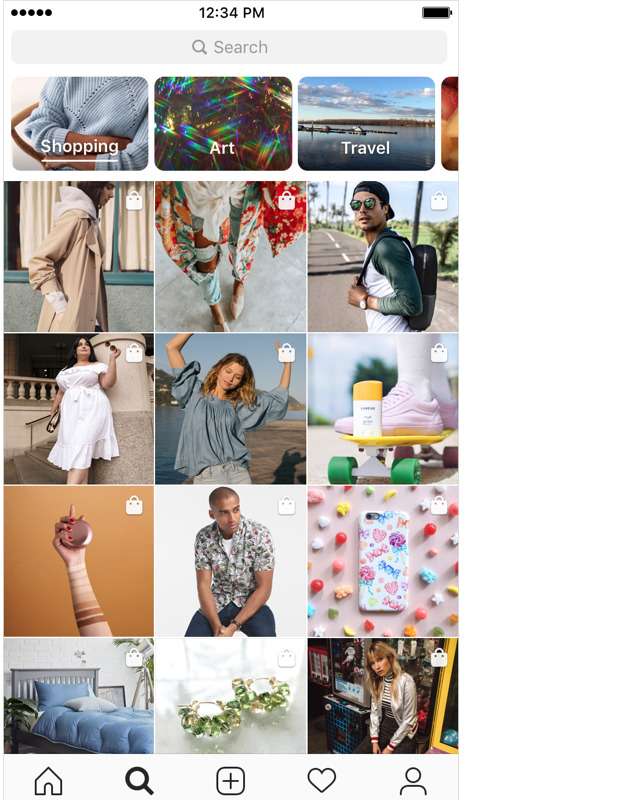
But, like any smart business would, Instagram wanted to be there when the deal went down. Enter Instagram checkout. The process is simple. Instead of the ‘view of website’ CTA, you’ll now be able to go to a checkout on Instagram and pay without ever leaving the app.
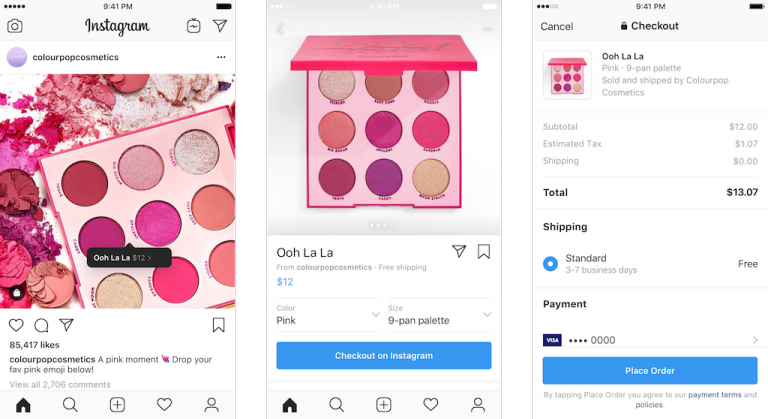
Once you’ve placed your order, Instagram will keep you up-to-date on the status of your order with push notifications.
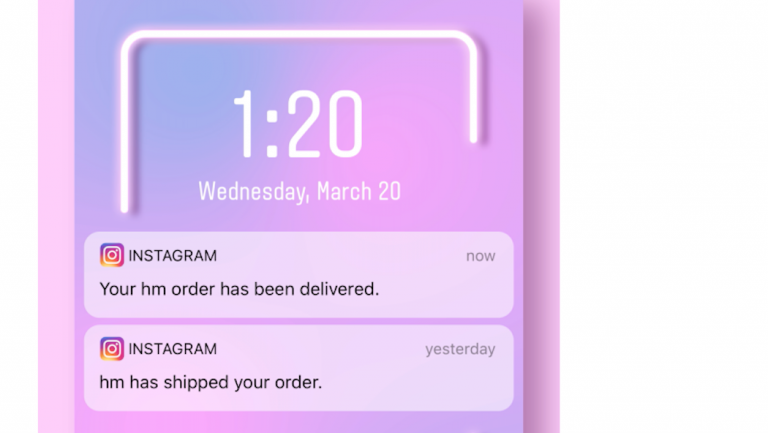
Easy, breezy, beautiful – in theory. There’s no word yet on how users would add multiple items to a basket (to avoid doubling-up on shipping costs) or manage baskets across multiple stores.
And Instagram hasn’t yet confirmed the cost of the feature, whether there’s a flat fee with every purchase or if Instagram would take a percentage commission. The latter could be an issue for luxury retailers with big per-item price tags. However, the brands that are lined up to trial the feature in the US are no small fish. They range from Uniqlo and H&M to Balmain, Prada, and Burberry (by way of a few Kardashian brands, KKW and Kylie Cosmetics).
An Instagram rep revealed to TechCrunch that the fee “will not change the price of the items for consumers”, implying that the retailer will absorb the cost of the transaction rather than the buyer.
The checkout feature is run through PayPal for security reasons and features a clever buffer to prevent mistaken purchases, giving users a short window of time to go back and cancel impulsive or mistaken orders. It’s reported that PayPal will also allow both retailer and buyer to handle all the related purchasing admin in-app too, including organising returns, tracking the status of their purchase, cancelling orders, and seeking customer support.
Gabbi Johnston, the founder of digital marketing firm Gabbi J Digital, says Instagram is reacting to the demand for convenience in the online shopping flow. “At the end of the day, customers are a little lazy. Being able to give them that [..] access to the checkout, without ever having to leave Instagram, it’s going to be great,” she says. “For businesses, being able to connect with their audience on Instagram where they already are and giving them the opportunity to go through the whole checkout process without having to leave the platform is going to be absolutely fantastic.”
Gabbi touches on a fundamental truth about human beings: if we’re forking over cash, we want it to be as easy as possible to do so. Keeping the buyer in-app for the entire shopping process, from discovery to delivery to after-purchase support, is a no-brainer.
How does Instagram checkout compare to other e-commerce offerings?
Why would a burgeoning e-commerce business choose Instagram for their online shop over others? We know Instagram can’t compete (at the moment) on functionality when compared to pure e-commerce platforms like Shopify, who integrate hefty analytics, discount code generation, and easy campaign management.
However, the big plus for Instagram checkout is that most retailers are already posting product images on the platform. It’s not much more work to tag a product, set a price and manage your inventory through Instagram. And there’s so much interest. According to Facebook, every month, 130 million Instagram accounts tap on a product post to learn more.
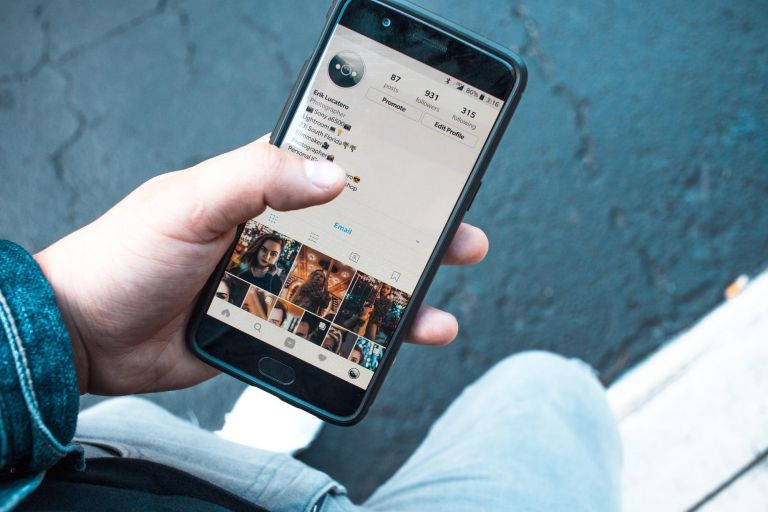
E-commerce platforms all brag about being easy to use, but Instagram has been built from the ground up as a simple, mobile-first app. As most buyers and retailers are managing their accounts through their phones, we’d guess that Instagram checkout will be genuinely easy to manage, even one-handed. This is a massive boon for newbies to the e-commerce market – if you can use Instagram, you can run an Instagram shop.
It’ll be interesting to see how the e-commerce industry reacts to Instagram Checkout. When Instagram’s e-commerce features were born, big competitors like Squarespace, eBay, Etsy, and Shopify all launched content pieces and pivoted their messaging to detail the synergistic power of using Instagram as a marketing tool and their tech as the checkout process. Now with Instagram checkout interloping on their territory in the user flow, we may see some changes to cross-platform integration.
Who should be excited about Instagram checkout?
Who has the most opportunity to benefit from the new checkout features? Bear in mind that Instagram’s e-commerce features are currently only available for retailers who sell products, not services.
Early-stage online retailers
Young retailers who are trying to establish an online store but don’t have the revenue to create a custom shopping cart or pay for a full-scale solution will be able to start selling sooner through Instagram with a pre-built checkout feature.
E-commerce newbies
A low barrier-to-entry means anyone who’s new to the game and not au fait with the technical side of things can still get online and start selling.
Retailers with limited products
If you do one thing and you do it right, Instagram checkout could be a boon for you as you can link to your product every time you post. However, if you have a large catalog, it becomes difficult to show everything you’re selling as Stories disappear and posts are pushed down the feed.
Established Instagram-first retailers
Retailers that were built on Instagram will be given a huge upgrade.
Retailers with a lot of social traffic
Whether you started on Instagram or not, if a big chunk of your audience is discovering you or connecting with you on the platform, you can leverage a higher conversion rate by simplifying your checkout process and keeping it in-app.
What to look out for…
Instagram checkout is a huge opportunity for some retailers, sure, but it’s not the right platform for everyone. Certain retailers should be wary of building their e-commerce strategy solely around Instagram. While it’s great as an entry-level or interim selling platform, there are certain risks you should take into account.
Instagram is calling the shots
You won’t own your e-commerce platform. You are participating in Instagram’s version of e-commerce and Instagram is in charge of what happens there.
Gerard Doyle, Biteable’s Marketing Strategist, says “My fear is that Instagram will start controlling shops like eBay does. [You] search on eBay, you find on eBay, you buy on eBay, you ship on eBay… there’s a bit of a risk that if you put all your eggs in the Instagram basket and the algorithm tips upside down, you might find yourself without a business.”
If you don’t like the prospect of waiting with bated breath to hear about algorithm updates or feature announcements, aim to move away from Instagram and seize the means of selling for yourself.
Instagram wasn’t built as an e-commerce platform
The reality is that Instagram wasn’t originally designed to be an online retailer, so there are features that don’t hold up on their shopping channels.
For example, retailers that have a huge catalog of goods can only tag a few items per post, meaning they have to get creative to ensure customers can find the products they want on their website. H&M post item numbers in Instagram captions to achieve this aim.
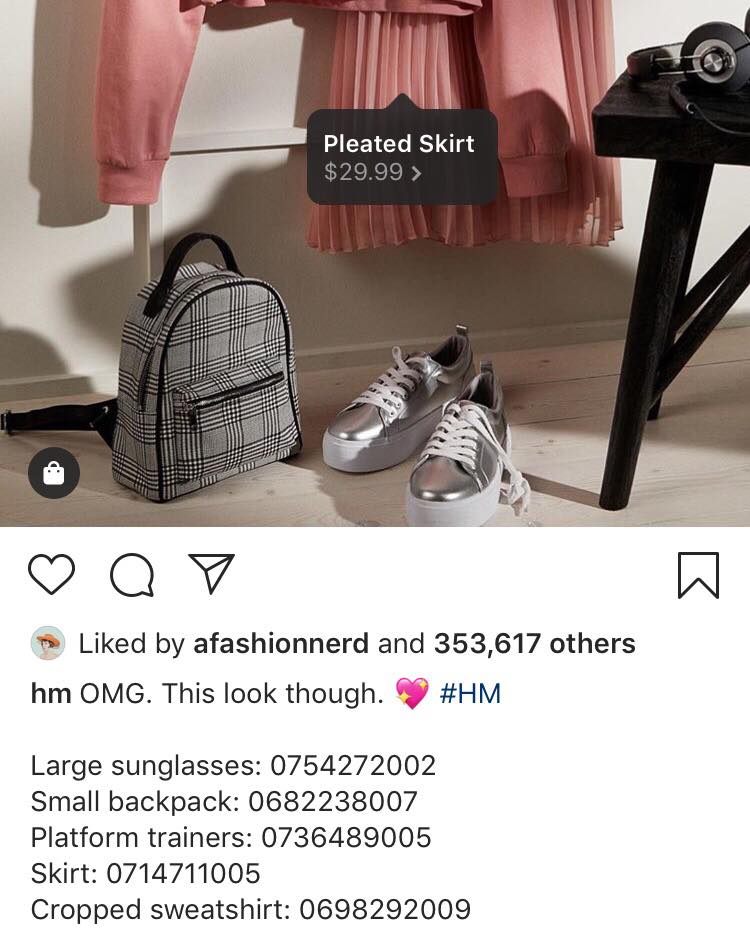
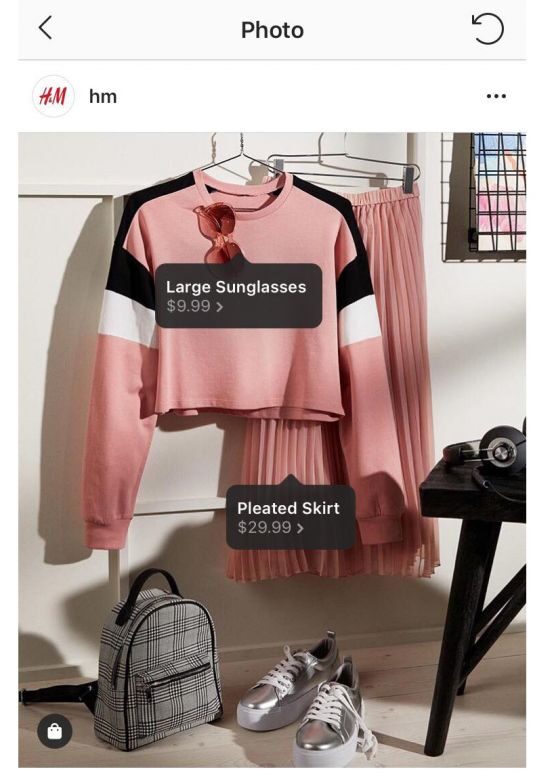
They also need to post a lot of content to make their full catalog discoverable on Instagram. And when they do, not all items are created equal. Users are served posts that are paid, popular, or new, rather than posts that match their purchasing patterns because, as we mentioned above, Instagram was built as a content platform, not an e-commerce platform.
Commodification doesn’t care about your brand identity
When your business operates through Instagram, it’s pushed into very restrictive boundaries that water down the potency of any brand identity you’ve been developing. Your content is presented through an Instagram frame, your buyers are pushed through a user flow you have no control over, and third-party partners are given permission to be involved in your business whether you like it or not.
And not only that, but without the context of brand identity, products in similar categories are reduced to price-point comparisons that can dilute your brand development work.
Siloing your revenue stream is risky
This may be obvious, but consider this: when doing business through Instagram, you’re relying on them for technical support. And when things go wrong, they go so wrong. Gabbi says, “It’s definitely something [to] consider. Particularly if we have another incident like we did a while ago when Facebook and Insta were down… that’s a whole day’s worth of business you could miss out on.”
Facebook and Instagram have been mired by several dangerous security breaches over the years. The most recent was in September of last year when up to 90 million Facebook accounts and their associated personal data were compromised. Your brand’s reputation and the security of your customers is tied to the reputation of the big brand you’re associated with.
All that said, if you’ve considered the risks and still think Instagram is the e-commerce platform for you, you can register your interest here.
TL;DR? Here’s a summary
Instagram shopping is making moves to corner the e-commerce market with a slick checkout function powered by PayPal that would allow buyers to complete purchases in-app.
For some retailers, it’s an interesting opportunity. Early stage retailers, e-commerce newbies, retailers with a limited product range, and those with large social followings should consider it. However, retailers should be wary of making Instagram a central pillar of their e-commerce plan.
E-commerce businesses that rely on Instagram will be vulnerable to any changes to the algorithm, may risk having their brand identity diluted, and will be building a business model on the rapidly shifting sands of Instagram, an unstable prospect at the best of times. Instagram checkout could work for some retailers, but approach with caution.

